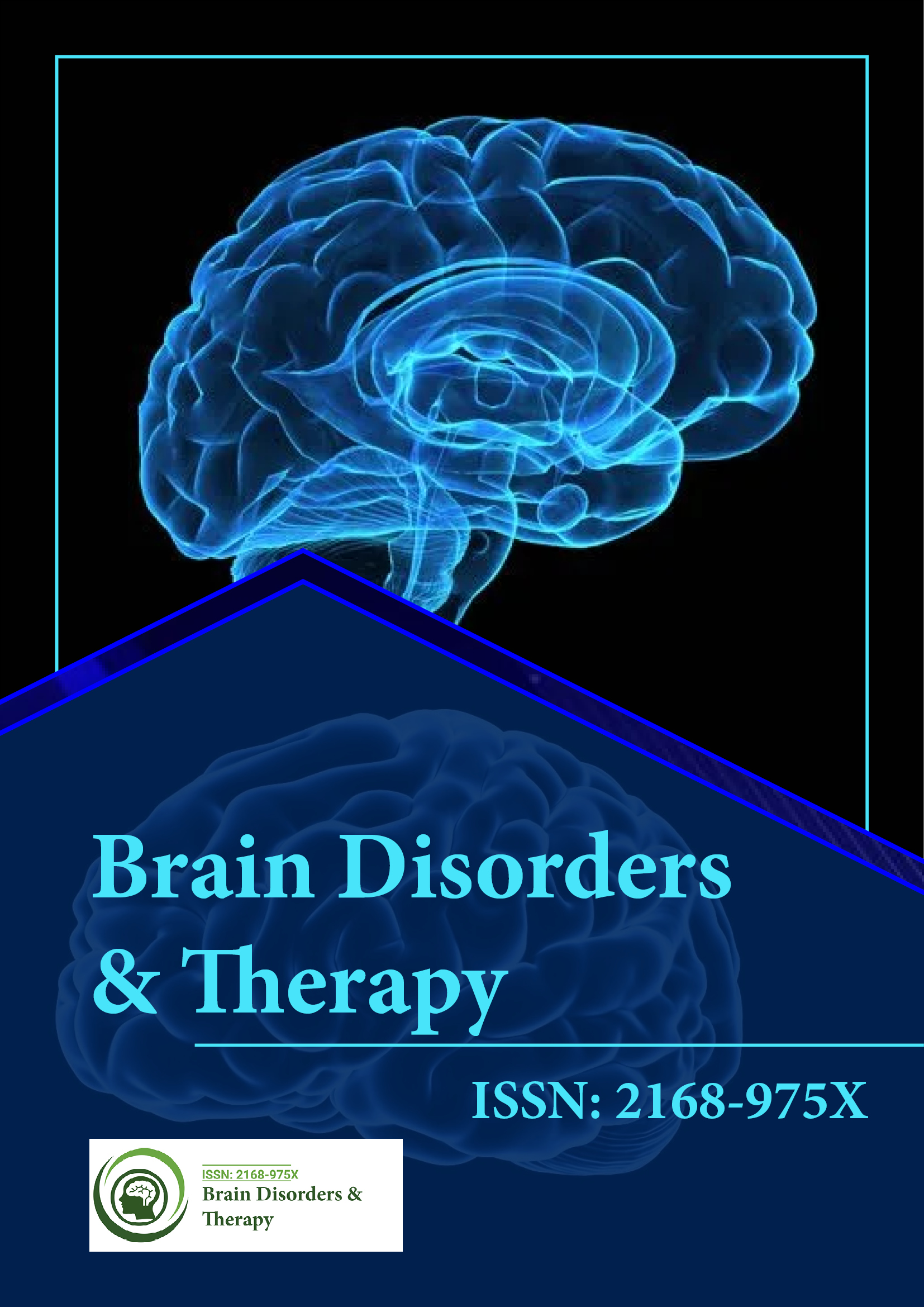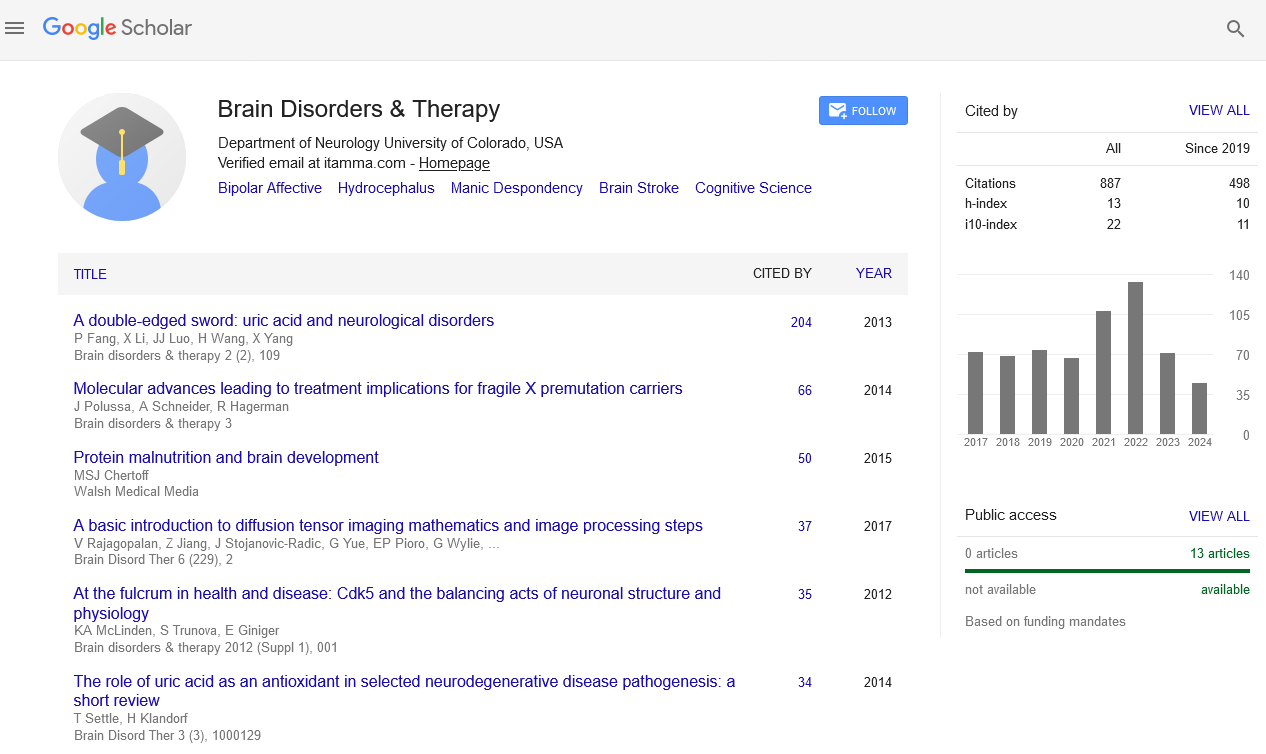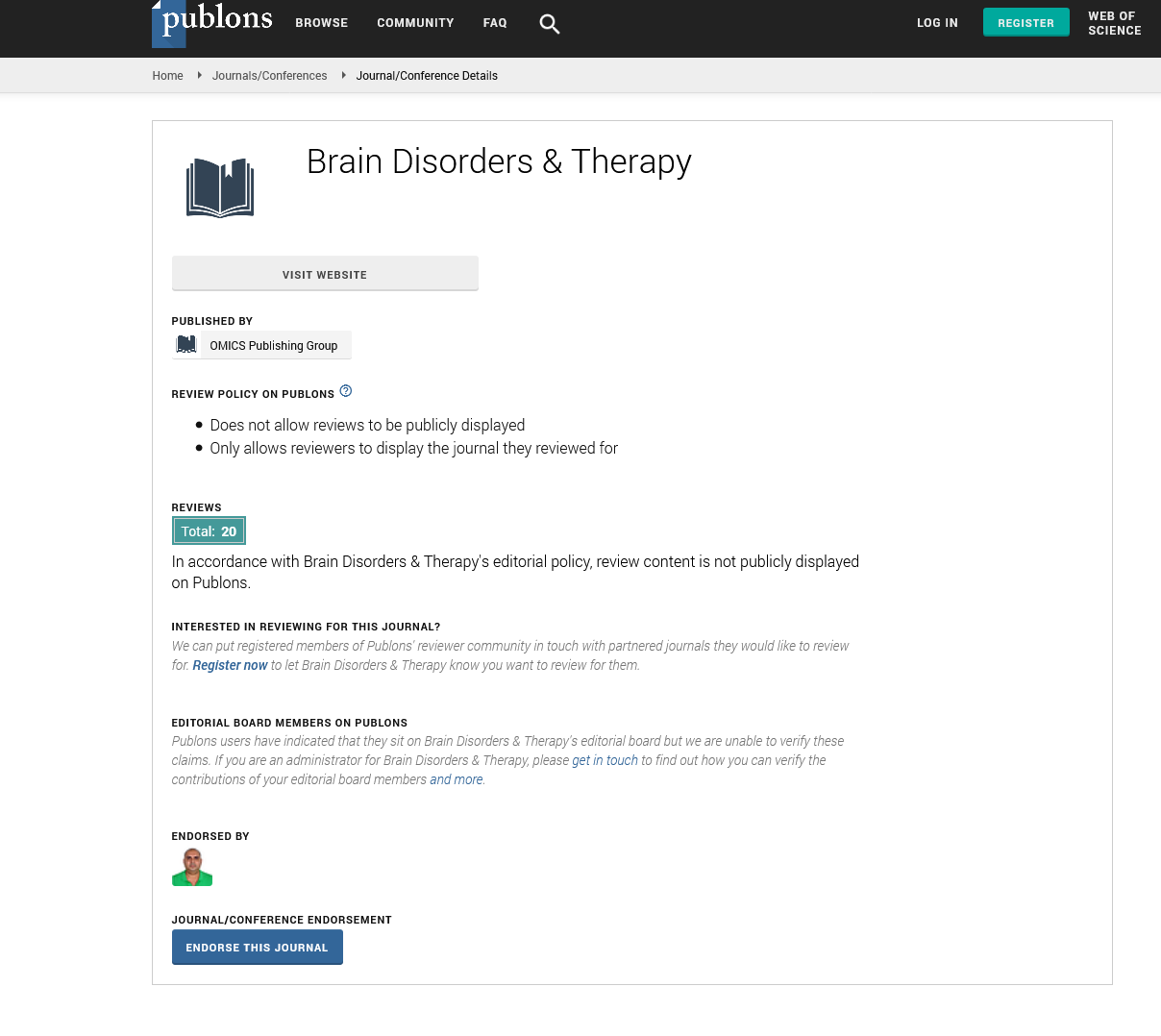Indexed In
- Open J Gate
- Genamics JournalSeek
- JournalTOCs
- RefSeek
- Hamdard University
- EBSCO A-Z
- OCLC- WorldCat
- Publons
- Geneva Foundation for Medical Education and Research
Useful Links
Share This Page
Journal Flyer

Open Access Journals
- Agri and Aquaculture
- Biochemistry
- Bioinformatics & Systems Biology
- Business & Management
- Chemistry
- Clinical Sciences
- Engineering
- Food & Nutrition
- General Science
- Genetics & Molecular Biology
- Immunology & Microbiology
- Medical Sciences
- Neuroscience & Psychology
- Nursing & Health Care
- Pharmaceutical Sciences
Opinion - (2025) Volume 14, Issue 2
Observation of Catatonia in a Genetically Confirmed Epileptic Disorder
Iria Royle*Received: 26-May-2025, Manuscript No. BDT-25-29727 ; Editor assigned: 28-May-2025, Pre QC No. BDT-25-29727 (PQ); Reviewed: 11-Jun-2025, QC No. BDT-25-29727 ; Revised: 18-Jun-2025, Manuscript No. BDT-25-29727 (R); Published: 25-Jun-2025, DOI: 10.35248/2168-975X.25.14.307
Description
Dravet syndrome is a rare, severe epileptic encephalopathy beginning in infancy, characterized by treatment-resistant seizures and developmental delays. While neurological impairments in Dravet syndrome are well documented, psychiatric complications have not been fully explored. Among these, catatonia—a psychomotor condition involving movement, behavioral and speech abnormalities—remains underreported. This article presents an in-depth examination of a potential association between Dravet syndrome and catatonia, drawing on existing clinical observations, neurobiological insights and implications for early identification and intervention.
Catatonia overview
Catatonia is a neuropsychiatric syndrome characterized by a range of psychomotor disturbances, including mutism, stupor, rigidity, negativism and echolalia. Though classically linked to mood and psychotic disorders, catatonia is increasingly recognized in neurological contexts, including epilepsy. However, its association with Dravet syndrome has not been systematically described.
Dravet Syndrome
Dravet syndrome presents early in life and is typically associated with multiple seizure types, including generalized tonic-clonic, myoclonic and atypical absence seizures. Individuals with Dravet syndrome often develop cognitive impairment, behavioral disturbances and difficulties in motor coordination. Common comorbidities include sleep disorders, autistic traits and gait abnormalities.
Management of Dravet syndrome is complex, involving polytherapy with anticonvulsants, dietary interventions and specialized educational and behavioral support. Despite advances in treatment, the prognosis remains challenging, especially when comorbid neurodevelopmental or psychiatric conditions emerge.
Neurological basis of catatonia
Neurobiological research implicates dysfunction in GABAergic and glutamatergic systems in catatonia. Functional imaging studies have shown altered activity in the basal ganglia, thalamus and frontal cortex. GABA-A receptor deficits, in particular, have been linked to the motor inhibition seen in catatonia. Benzodiazepines, which enhance GABA-A receptor function, are often effective in rapidly reversing catatonic symptoms, supporting this theory. In refractory cases, Electroconvulsive Therapy (ECT) has demonstrated efficacy.
Though Dravet syndrome and catatonia appear distinct, shared mechanisms may connect them. The most compelling basis for their association lies in GABAergic dysfunction. Dravet syndrome involves impaired function of GABAergic interneurons due to SCN1A mutations. These interneurons are crucial for regulating neuronal excitability and maintaining network stability. Given that catatonia is also linked to GABAergic dysfunction, individuals with Dravet syndrome may carry a predisposition to catatonic symptoms, especially under stress, illness, or rapid neurological changes.
Furthermore, patients with Dravet syndrome often exhibit features common to autism spectrum disorder, which itself has been associated with catatonia, especially during adolescence. This overlap further strengthens the rationale for clinical vigilance.
Clinical observations
While large-scale studies are lacking, several case reports provide insight into this potential association. In one instance, a teenager with SCN1A-confirmed Dravet syndrome developed catatonic symptoms, including mutism and immobility, following a period of increased seizure activity. A lorazepam challenge resulted in marked improvement, confirming the diagnosis.
In another report, catatonia emerged during a period of febrile illness without concurrent seizures, suggesting that non-ictal stressors may also trigger symptoms in predisposed individuals. The response to benzodiazepines in these cases mirrors that seen in other catatonic syndromes, despite the presence of a complex neurological background.
Such reports, though few, highlight the possibility that catatonia may be underrecognized in this population due to overlapping symptoms with epilepsy, autism, or medication side effects.
Management strategies
Treatment of catatonia in individuals with epilepsy presents unique challenges. Benzodiazepines remain first-line therapy, with lorazepam commonly used due to its rapid onset. In cases where sedation or respiratory suppression is a concern, lower starting doses with slow titration may be appropriate.
Adjunctive interventions include supportive care, hydration and physical therapy to prevent complications from immobility. In refractory cases, ECT may be considered, though its application in individuals with epilepsy is complex and requires specialized oversight.
Importantly, antipsychotics—particularly first-generation agents—may worsen catatonia or provoke neuroleptic malignant syndrome. Careful selection and close monitoring are advised if these agents are used.
Dravet syndrome is a complex neurological disorder with an expanding profile of cognitive and behavioral features. Catatonia, though rarely reported, may occur in this context due to shared neurobiological pathways. Recognizing the signs of catatonia in individuals with Dravet syndrome can enable timely intervention, reduce complications and enhance quality of life. Increased clinical awareness and interdisciplinary care are essential for addressing the full spectrum of challenges faced by this population.
Citation: Royle I (2025). Observation of Catatonia in a Genetically Confirmed Epileptic Disorder. Brain Disord Ther. 14:307.
Copyright: © 2025 Royle I. This is an open-access article distributed under the terms of the Creative Commons Attribution License, which permits unrestricted use, distribution, and reproduction in any medium, provided the original author and source are credited.


